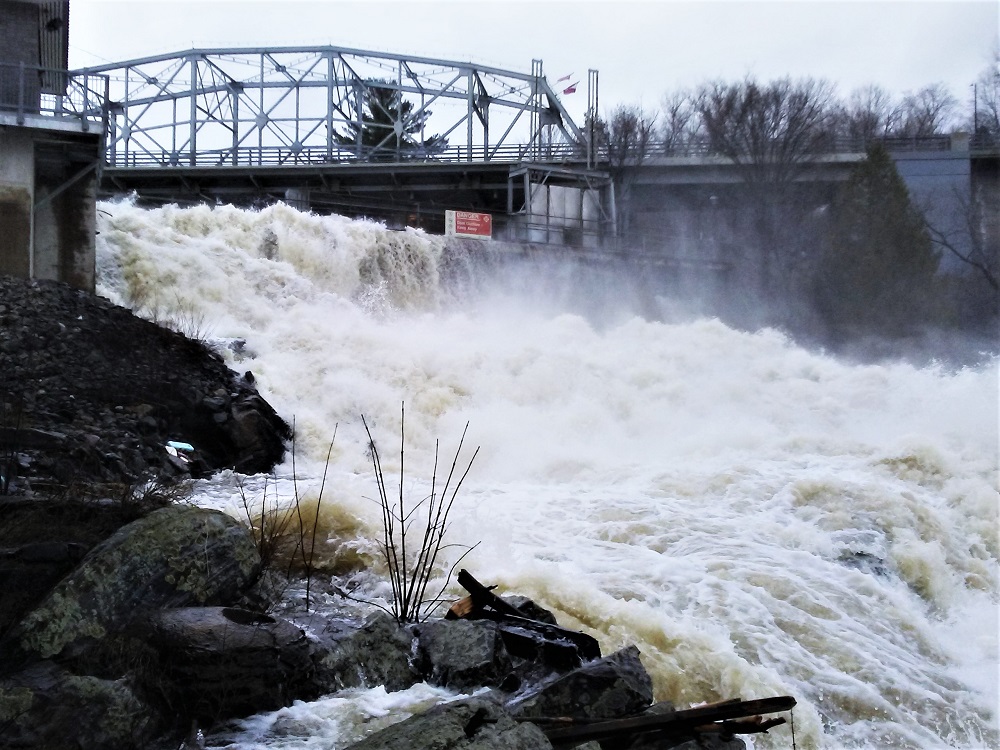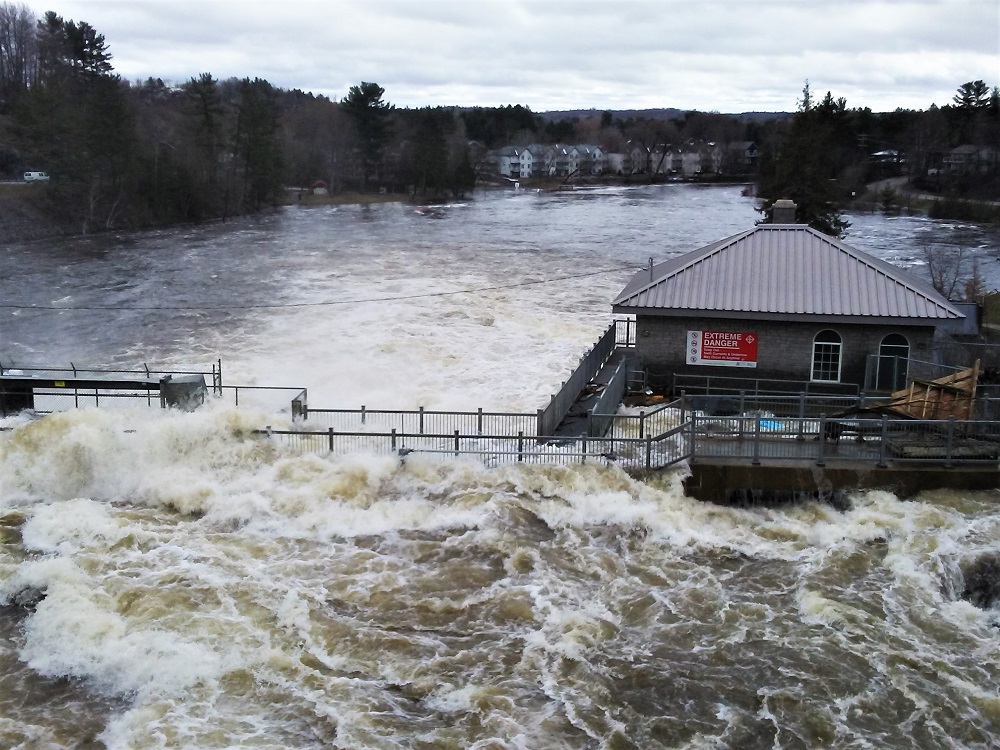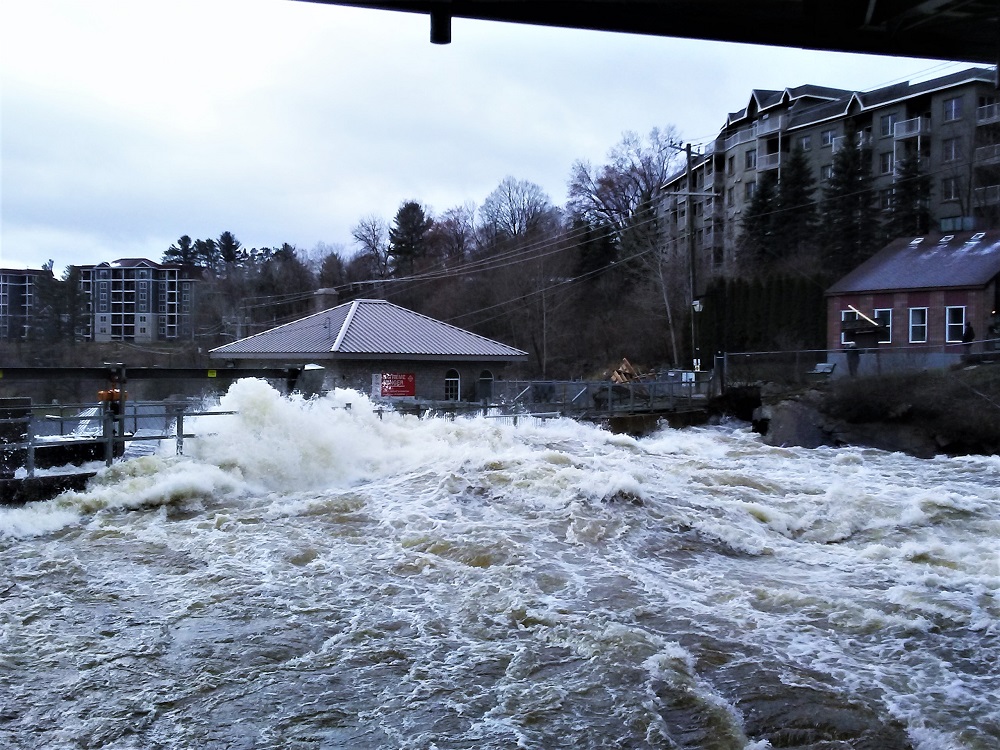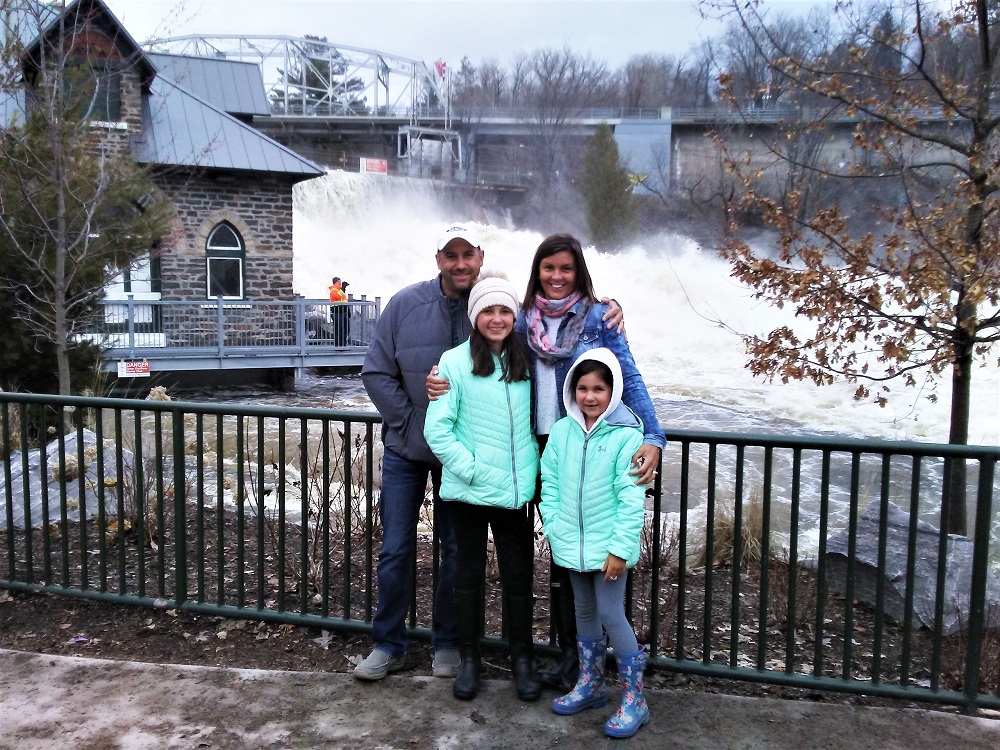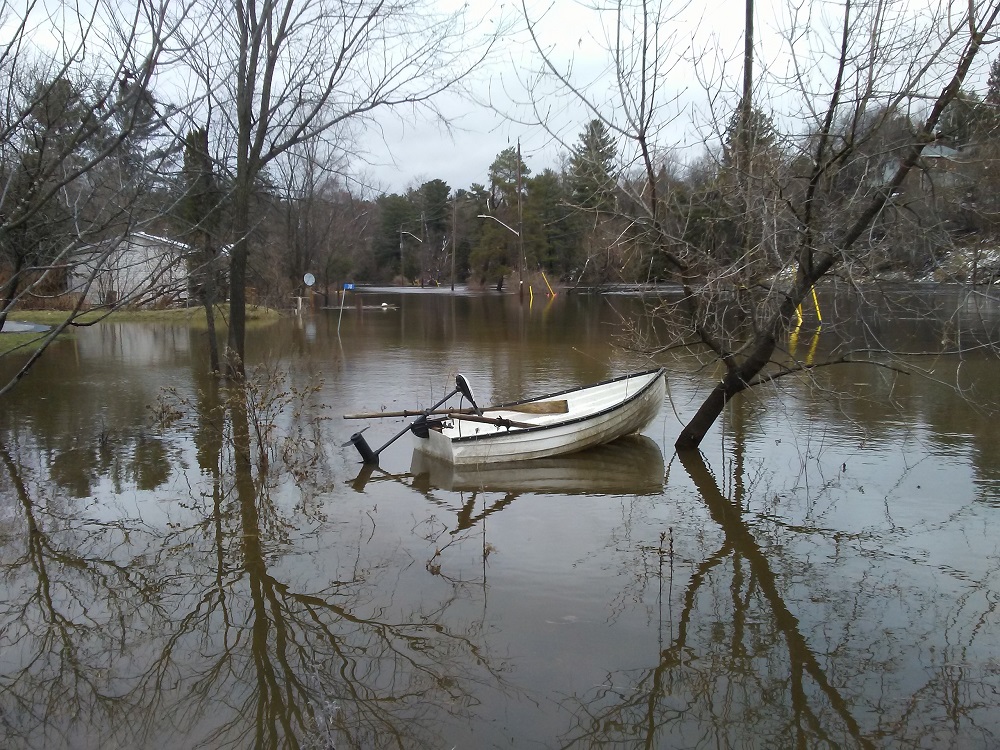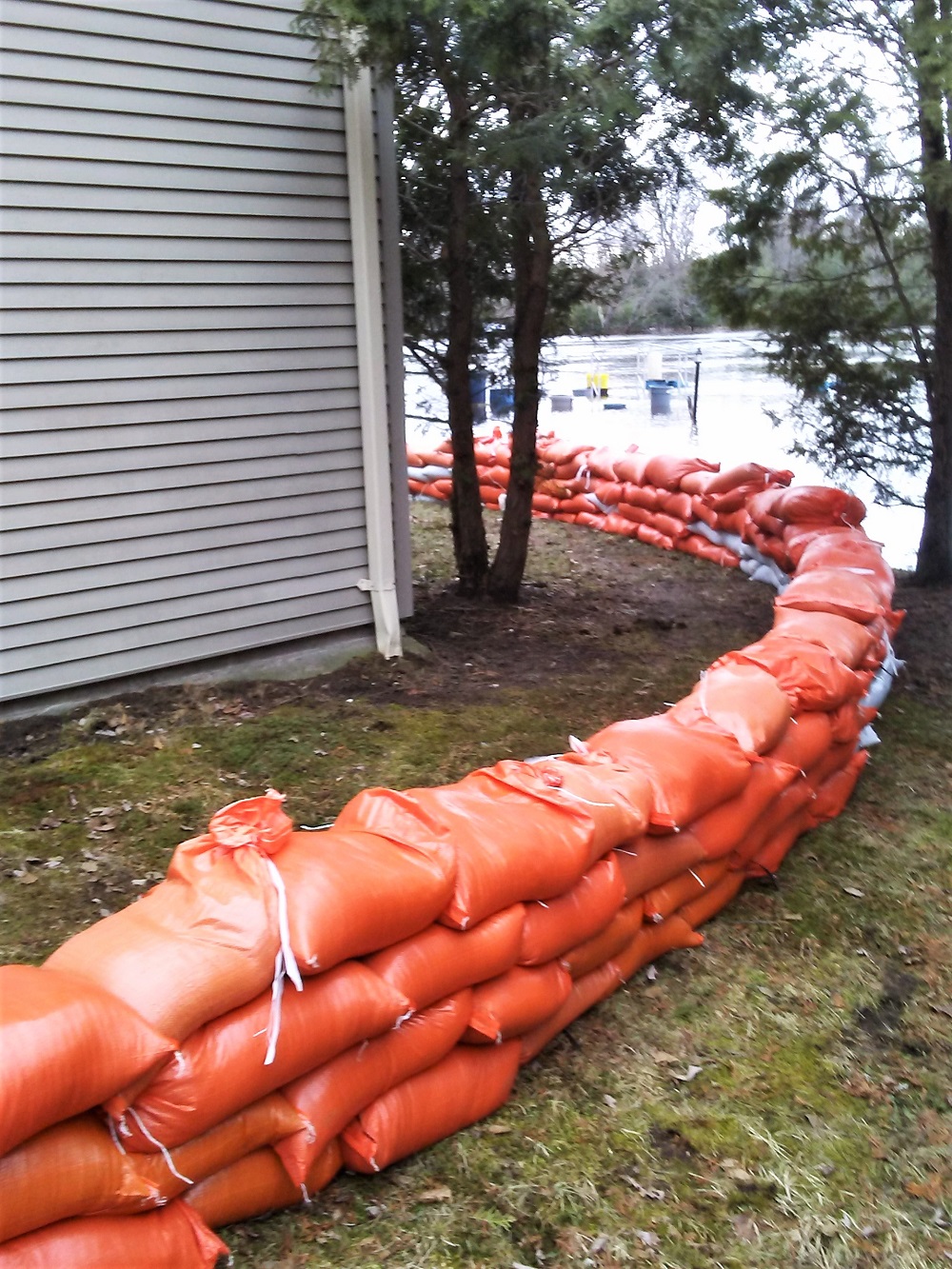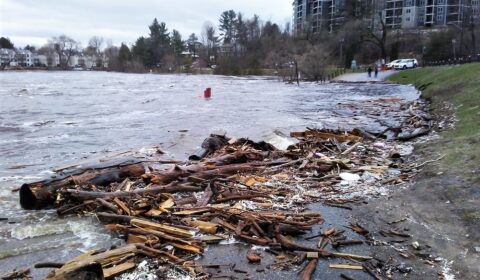FLOOD ZONE TOUR SHOWS DEVASTATION, RESILIENCE ACROSS MUSKOKANS
Mark Clairmont | MuskokaTODAY.com
MUSKOKA — “My community is under water. That’s why I’m here.”
So said Griff Ferguson, who was at the Fowler Construction yard Saturday afternoon.
Along with about 100 other people, mostly volunteers and homeowners, filling or picking up sand bags as a skiff of snow remained from the night before.
They were helping to build dikes and shore up homes and businesses in a desperate bid stop flood waters from breaching the banks of the Muskoka River’s north branch.
“I was born and raised here,” said the Milford Bay resident, whose parents have a place on Lake Muskoka, where their dock is under water.
A tour up and down the Muskoka River’s north and south branches and it was the same story.
And everyone says the 2019 spring freshet is worse than the one in 2013.
Bracebridge Mayor Graydon Smith told the CBC 2,000 people and properties may be affected by this week’s flooding.
In Huntsville, nearer the headwaters of Ottawa and Algonquin Park, parts of the downtown were under water.
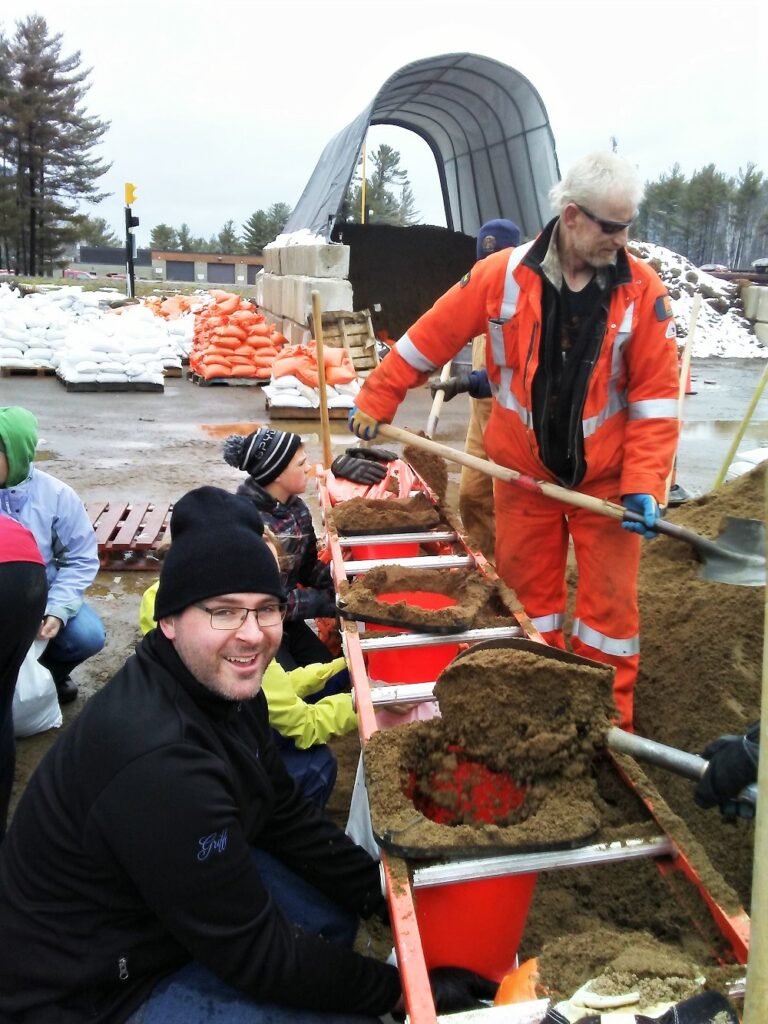
The north branch of the Muskoka River reached the back of buildings on Main Street, and Brendale Square was more than a foot deep in water the size of two football fields.
Bracebridge and Huntsville both declared local emergencies this week.
Yet the Muskoka Maple Festival went ahead downtown as scheduled — just 100 feet from the water’s edge — as hundreds milled on the street sampling maple syrup-related products.
River Mill Park was half under water, its boardwalk and docks covered. Nearby businesses on both sides of Main Street were closed by the watery effects. Pizza Pizza on one side and Boston Pizza on the other.
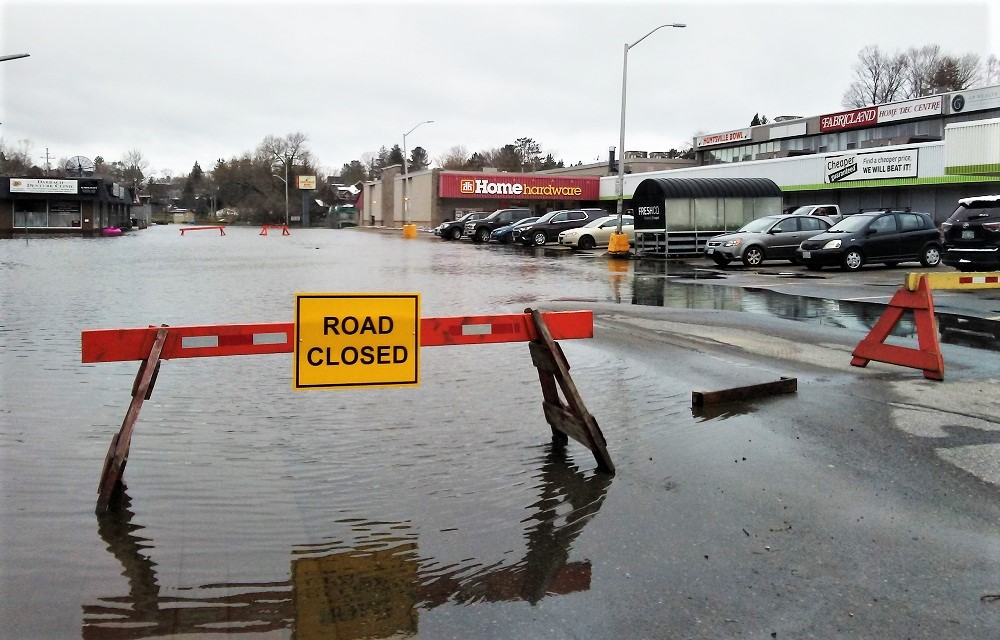
A mix of maple lovers and flood watchers mingled seamlessly.
And it was almost business as usual for many merchants on the other side of Main Street.
But for staff at Algonquin Outfitters, which backs onto the river, was busy mopping up after five days of flooding.
That’s more than twice as long as in 2013 when it lasted only 48 hours, said Nate Smith, who was in the basement monitoring the eight sump pumps they’ve had on the go this week.
He said they’ve been working around the clock pumping water out as fast as it comes in, with two-person teams watching the three sump holes in the floor.
They have to watch the breakers and make sure the pumps have gas in them.
They learned that six years ago, and also have better flooring now. Though there were still sand bags around some bikes inside.
He said the water was lapping at their doors and those of other businesses along the north branch of the Muskoka River, below the iron bridge, where the board walk and docks are a couple feet deep in water.
Residents who live west of Huntsville and who have been detoured around a 20-foot sinkhole on Ravenscliffe Road at Camp Tawingo, were able to get through late Saturday after two days of fill and new culverts were put in.
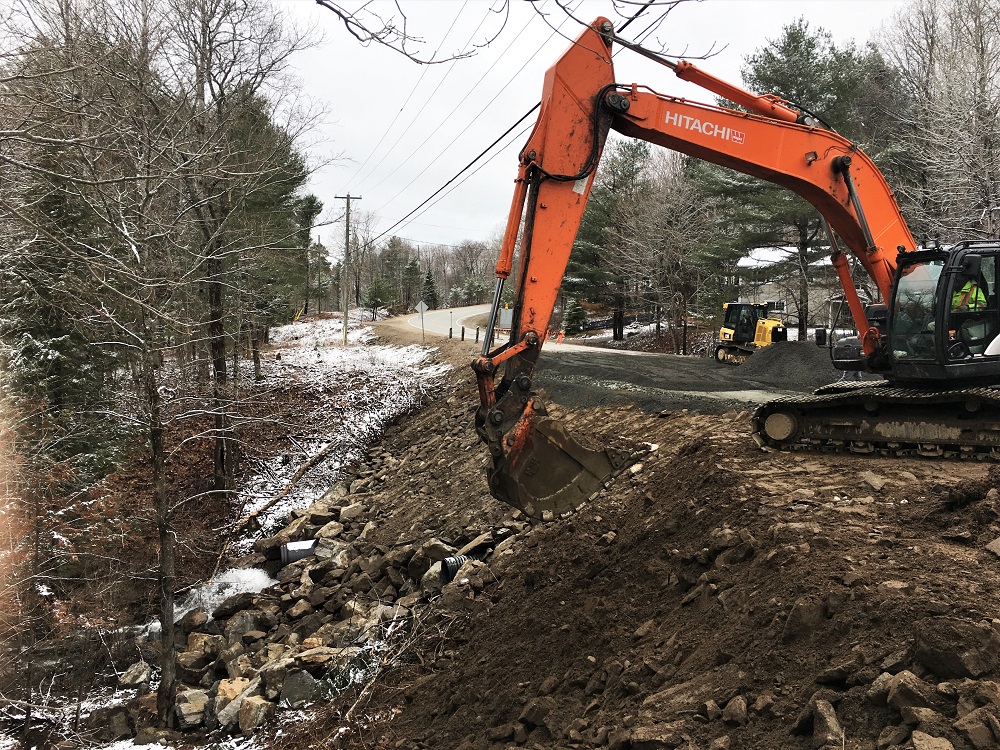
Out along the Brunel Road, on the east side of town toward Baysville, the locks five kilometres from the downtown were a rush with water and people. They were worried about a possible overflow and its effects further down river after the MNRF pulled out the stops on a dam to try and control the flow.
Down in Port Sydney, the town’s beach was invisible, the waves of Mary Lake reaching almost to the road.
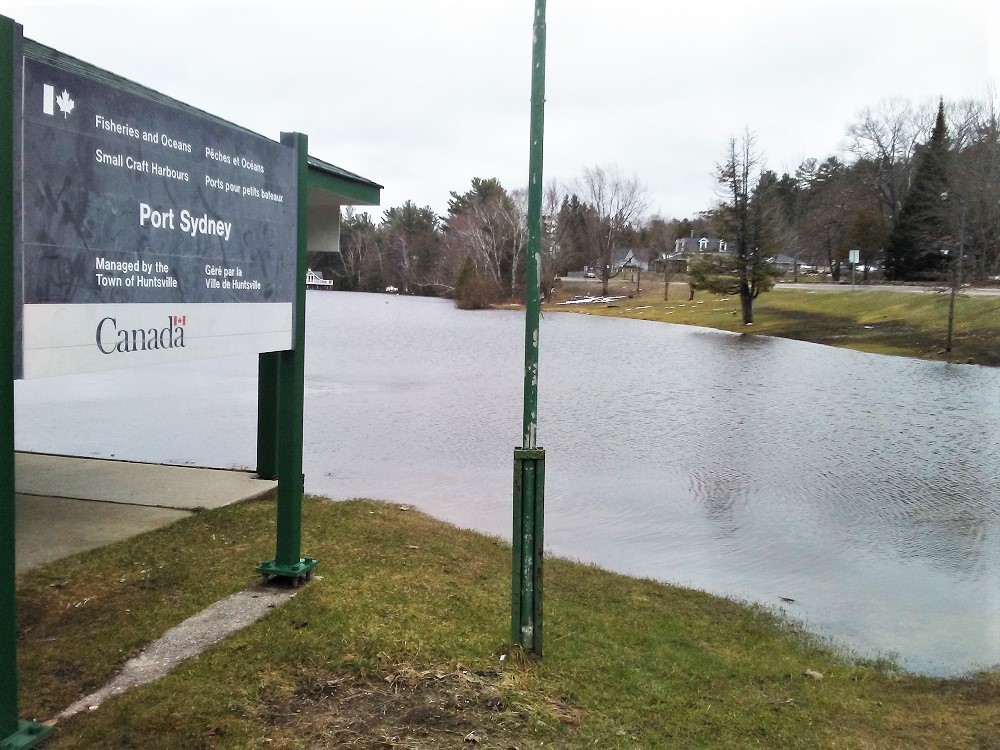
At “smooth rock falls,” a popular summer water attraction for body surfers that has proven fatal, dozens of people were standing on its edge snapping pictures of the rushing water.
Debbie Broadbent, who has a cottage on the river, said it’s the highest level she’s ever seen.
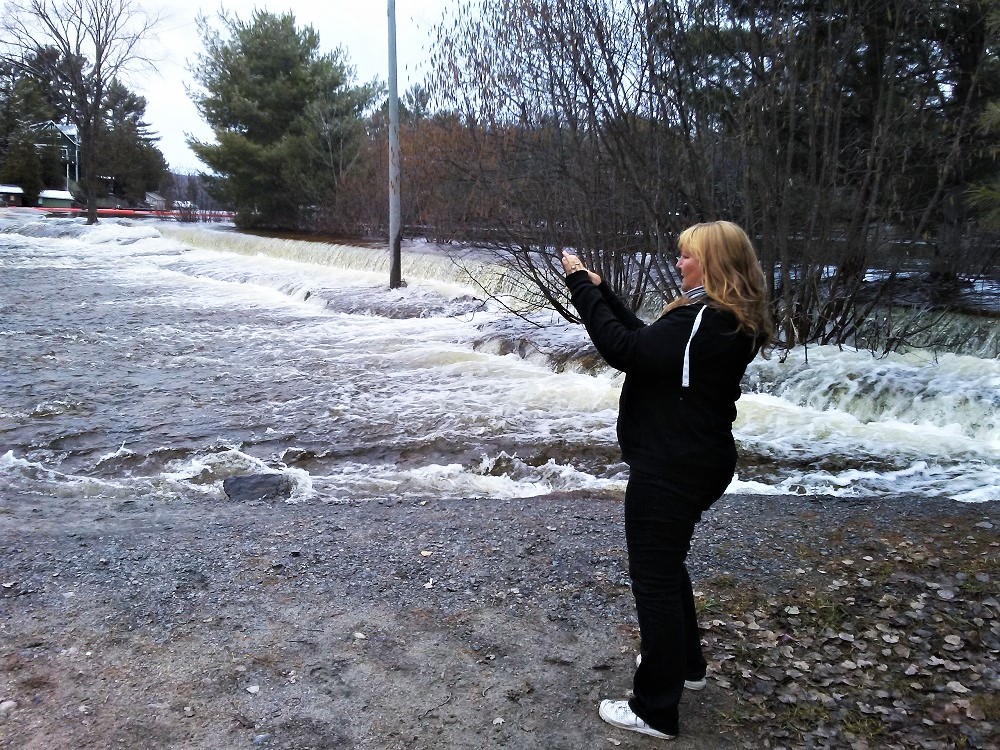
Crossing over the bridge at High Falls, the water could be easily seen eerily close to Hwy. 11.
In Bracebridge, at Fowler’s, the army of volunteers was in full swing.
Yard super Matt Balfe was a busy directing trucks, tractors and forklifts like a traffic cop, as close to 100 volunteers, home and business owners and construction employees were busily, cheerfully and efficiently filling thousands of sand bags for pick up and delivery.
This week, in increasing numbers, close to 20,000 orange and white bags — each weighing at least 50 pounds — were filled.
Balfe, who is Fowler’s director of business development, said it got progressively busier as the flooding mounted and a few times ran out of bags.
But when Smith put out the call late Friday afternoon for volunteers, the numbers swelled like the rivers.
By suppertime 20 or 30 people showed up almost instantly for the evening, even as the pounding rain added to their problem. And they worked in a shed until 10:30 p.m.
On Monday and Tuesday Fowler’s packed 1,400 bags. Wednesday 2,500 more. Thursday the count was 3,400. Friday they did 4,700.
And by 1 p.m. Saturday, their busiest day, everyone had filled 6,300 bags — with several hours to go.
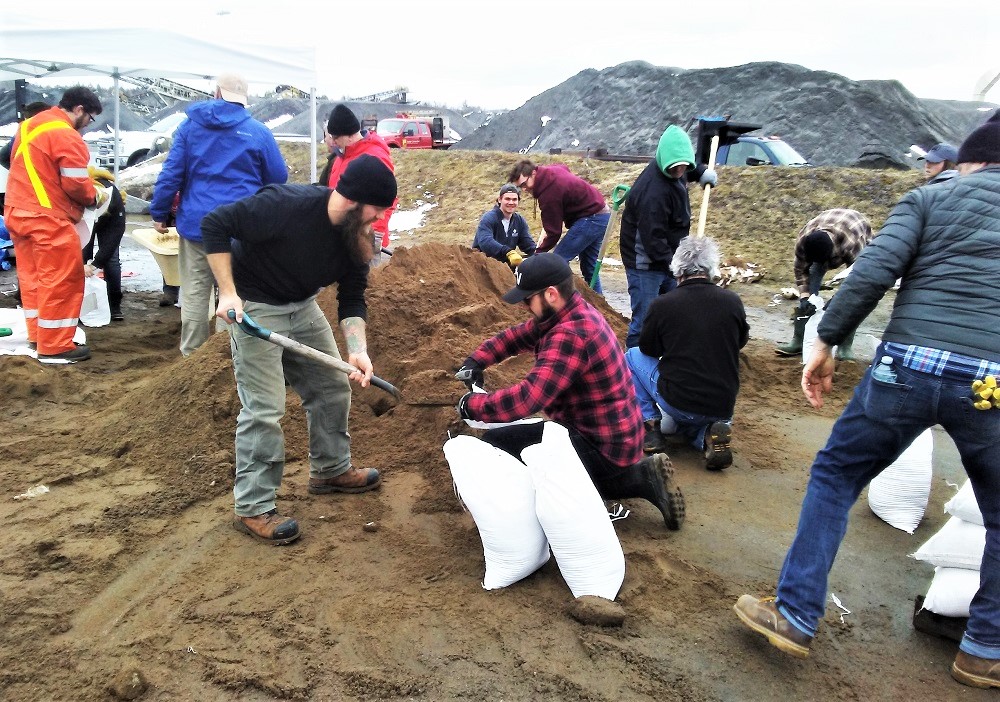
Volunteers came from across Central Ontario.
Cory Bonneville, of Midland, saw the call and came alone.
“I just wanted to help,” he said.
John Barks and Shane Lanchbury were among more than a dozen firefighters who came from Orillia, along with other Orillia city employees who delivered bags directly to homes and businesses.
Fowler trucker Kelly Charterand, of Burk’s Falls, came to work using his two-sided sander, which can unload 10-ton of sand an hour.
His two-sided dispensing truck was being unloaded by red-coated members of the Barrie-based Georgian Bay Search and Rescue. They had about 15 people answer the call from various parts of the region.
Crowded around both sides of the truck, it looked like someone milking a cow, with a volunteer sitting on a couple sacks of sand and placing an empty bag over a hole beneath the truck to collected a few seconds of sand.
One rescue volunteer was “more than willing” to help.
“It’s kind of the preventative part of search and rescue,” she said. “It’s important to come up and help out; I come here to canoe and kayak.”
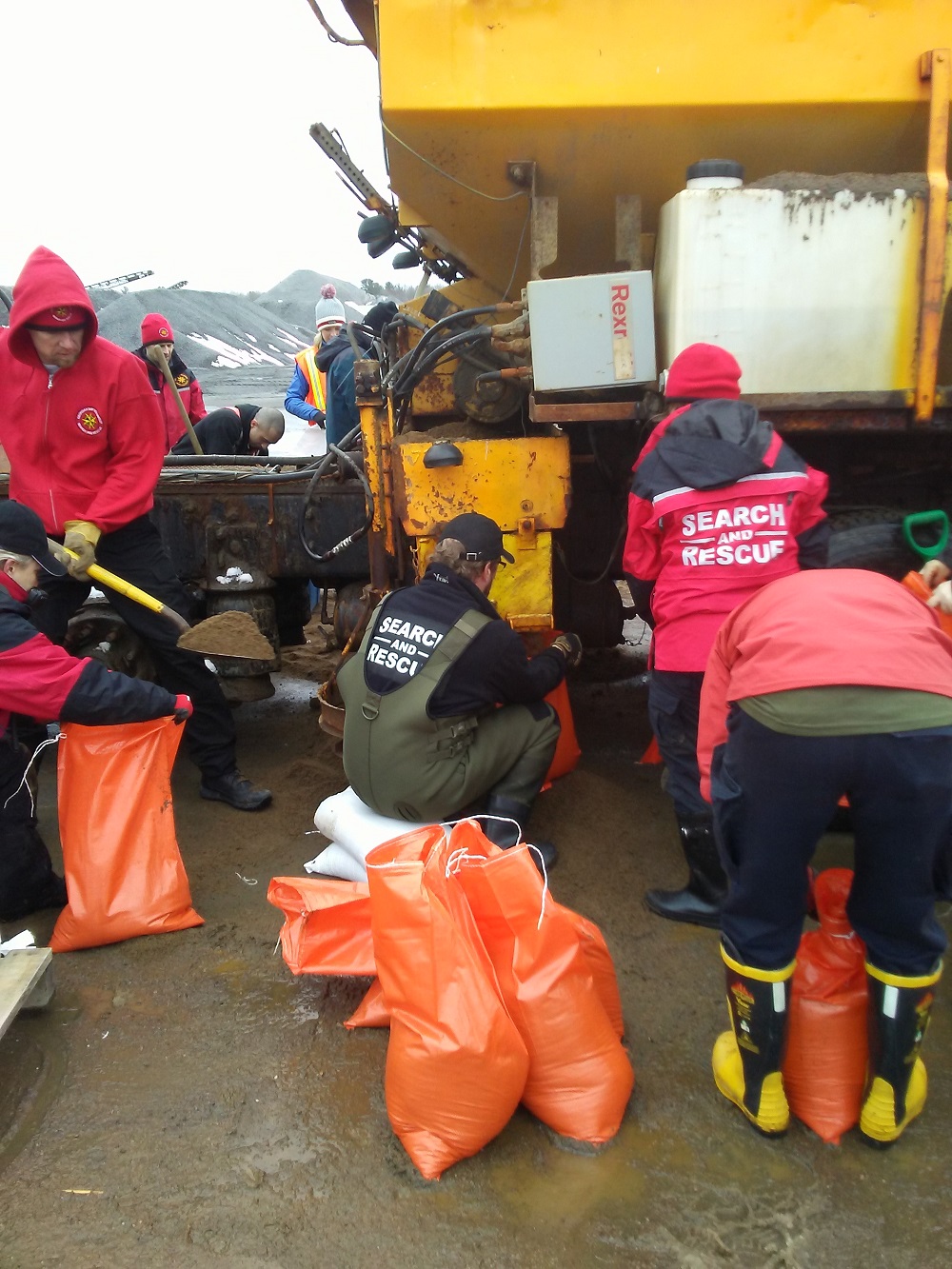
Nearby, a ladder sat on bags of sand, with orange warning cones tucked upside down in the rungs, as people funneled shovels full of sand through them into bags.
A few feet away 10 men and women dug into a pile of sand and poured them into white bags.
In between the Orillia firefighters took the bags, tied them and piled them on pallets to be loaded on trucks. A forklift took them to waiting pickups.
The never-ending task continued as sand was delivered by the bucketful in a big front-end loader every few minutes to replenish the sandy stock.
Amy Clayton and her husband Scott were among the dozens of people who heeded the volunteer call.
She didn’t think twice about responding.
“Of course not. There was no hesitation.”
Downtown, the river road that goes up to the hospital was closed, an abandoned boat and motor floating in the water.
Everywhere along the river you could see signs of the flooding, the tell-tale signs being orange and white sand bags in front of homes near the riverbank.
Downtown, staff at the RONA lumber yard have been preparing for the worst since a week ago Friday, when they began moving tons of timber and shingle piles back from the edge of the river just above the falls.
“It’s just a little inconvenience for us, compared to what other people are going through,” said Jonathan Wallace, who works in the yard.
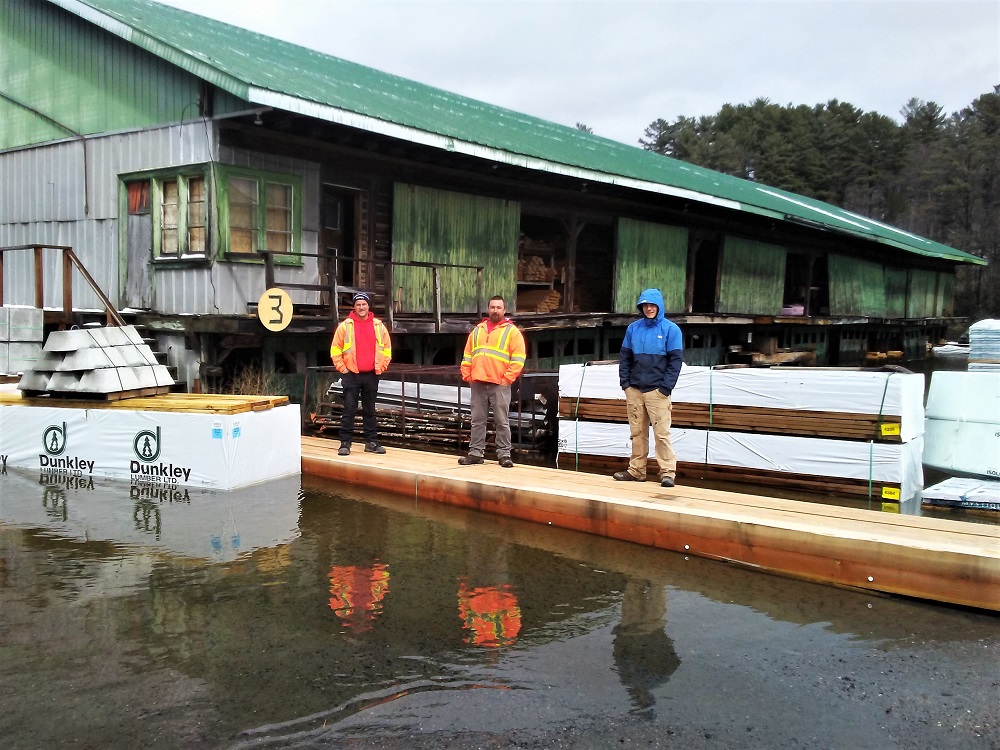
The biggest tourist attraction was the mighty Bracebridge Falls, where its roar has attracted hundreds, if not thousands this week to the receding riverbanks. At its base it was cluttered with wooden debris that covered the parking lot, which in 2013 a few cars could squeeze in without getting flooded up to their gunnels.
Anna Szuska, at the Bracebridge Chamber of Commerce Office that sits at the mouth of the falls, said their office was busy with tourists checking out the falls.
The Giessler family, from Niagara Falls, heard about the flooding on the Weather Channel and decided to come up and see how the falls compared to theirs.
“Pretty good” said mom Lesley, who was with her husband Jeff and daughters Lea, 6, and Ava, 11.
And to see how their Lake of Bays cottage was doing. Thankfully well, said Jeff.
They were among hundreds (thousands this week) who stared in awe at the roaring falls and were amazed at how dangerously fast it flowed.
At its base, chunks of wood and logs washed up against the shore over where the parking lot sits covered in river water; unlike in 2013 when it was still partially above water.
Officials say the river has peaked, but they’ve said that before and the levels are still rising.
Sunday is expected to be a lot sunnier than Saturday, but there may be rain early this week.
So this story, like the river, is a long way from its end.
